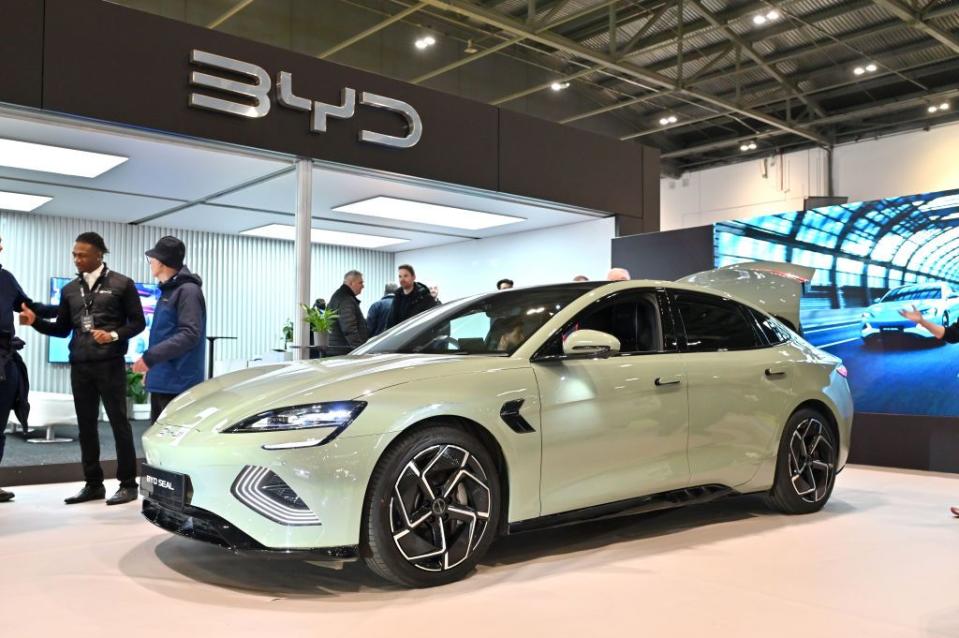Does a $25,000 Tesla Remain a Possibility?

Tesla's $25,000 EV project has been shelved, Reuters has reported, drawing a denial from Tesla CEO Elon Musk and renewed interest from Wall Street.
The EV maker is likely to face strong competition from numerous, more affordable EVs from Chinese automakers if it were to develop a vehicle with a $25,000 starting price.
Musk has said the company will show a "robotaxi" by the end of 2024, but just what it could be is difficult to predict, given the EV maker's past promises of self-driving vehicles.
Tesla's on-again, off-again $25,000 car project, which once went as far as an official sketch, is believed to be on the back burner if not abandoned outright. Reuters reported a couple of weeks ago that the project has been canceled.
Tesla CEO Elon Musk quickly denied rumors of the project's demise, and even doubled down with promises of a robotaxi by later this year, surprising plenty of investors and industry observers.
But now, in 2024, the concept of a $25,000 Tesla is not as innovative as it seemed in the past decade, back when Tesla actually had a narrow window to attempt such a vehicle. Regardless of the project's actual status, it is now apparent to industry watchers that the Tesla Model 2, as it has been known at times, is not exactly imminent.
And perhaps we're not likely to see something like it debut in the next two years, given Tesla's development cycles and the current focus on the Cybertruck, Roadster, and Optimus robot.
But has the business case for such a model already faded in several key markets, despite the relative dearth of economy EVs in North America?
As usual with such moonshots, the project began in one technological and economic climate, and approached fruition in a vastly different one. Or in this case, approached the back burner.
In the span of time between news of the project first emerging and the present day, we have seen a serious wave of inexpensive EVs appear on the market in China, and start making their way to Europe and South America.
Not only is there no shortage of EVs in China that cost $25,000, but there are now several popular models that cost $20,000 or $15,000. And there are now some priced near the $10,000 mark, including BYD's Seagull.
As a result, the idea of a $25,000 EV is a somewhat stale concept in China, and it actually sounds kind of expensive for the subcompact electric economy-car segment.
The reason Tesla has yet to deliver a $25,000 EV is quite possibly because the profit margins for such a car are just too meager.

This was the case in 2021, when the project was thought to be under way, and it's certainly the case in 2024 when inflationary pressure and the rising cost of raw materials have likely pushed that initial $25,000 target north to $30,000 or beyond, not far from what the least expensive Model 3 was originally expected to be.
The promise of a robotaxi later in 2024, on the other hand, perhaps raised more questions than it answered.
For starters, if Musk was talking about a robotaxi in the current industry usage of the word—an SAE Level 4 vehicle that is designed to automatically pick up passengers when summoned via an app—then it would also need its own ecosystem of related software and hardware. This would include lidar sensors, which Tesla has famously shunned, in addition to radar, which Tesla has also now set aside as unnecessary.
In short, there is a whole technological base behind current commercial robotaxi operations that have been deployed in several cities, so the issue of a robotaxi is far from just the vehicle itself. Tesla's current suite of driver-assist systems, including Autopilot and FSD, only permit SAE Level 2 usage, and the automaker has not indicated in the recent past that a driverless car that could ferry passengers was imminent.
The robotaxi comment also raised the question of just who the owners of the cars would be. Typically, these are companies that own the fleet and related hardware, and also employ plenty of specialists to monitor them remotely. Would Tesla be the owner in this case, or would it look to sell the robotaxis to companies like Uber?
It's certainly possible that Tesla could provide the EVs, and a third party could fit them with sensors. And perhaps this is what we'll see later this year.
Has the window for a $25,000 Tesla already closed, given the competition from Chinese automakers, or would Tesla still be able to develop and offer such an EV while also making money on it? Let us know in the comments below.

 Yahoo Autos
Yahoo Autos 